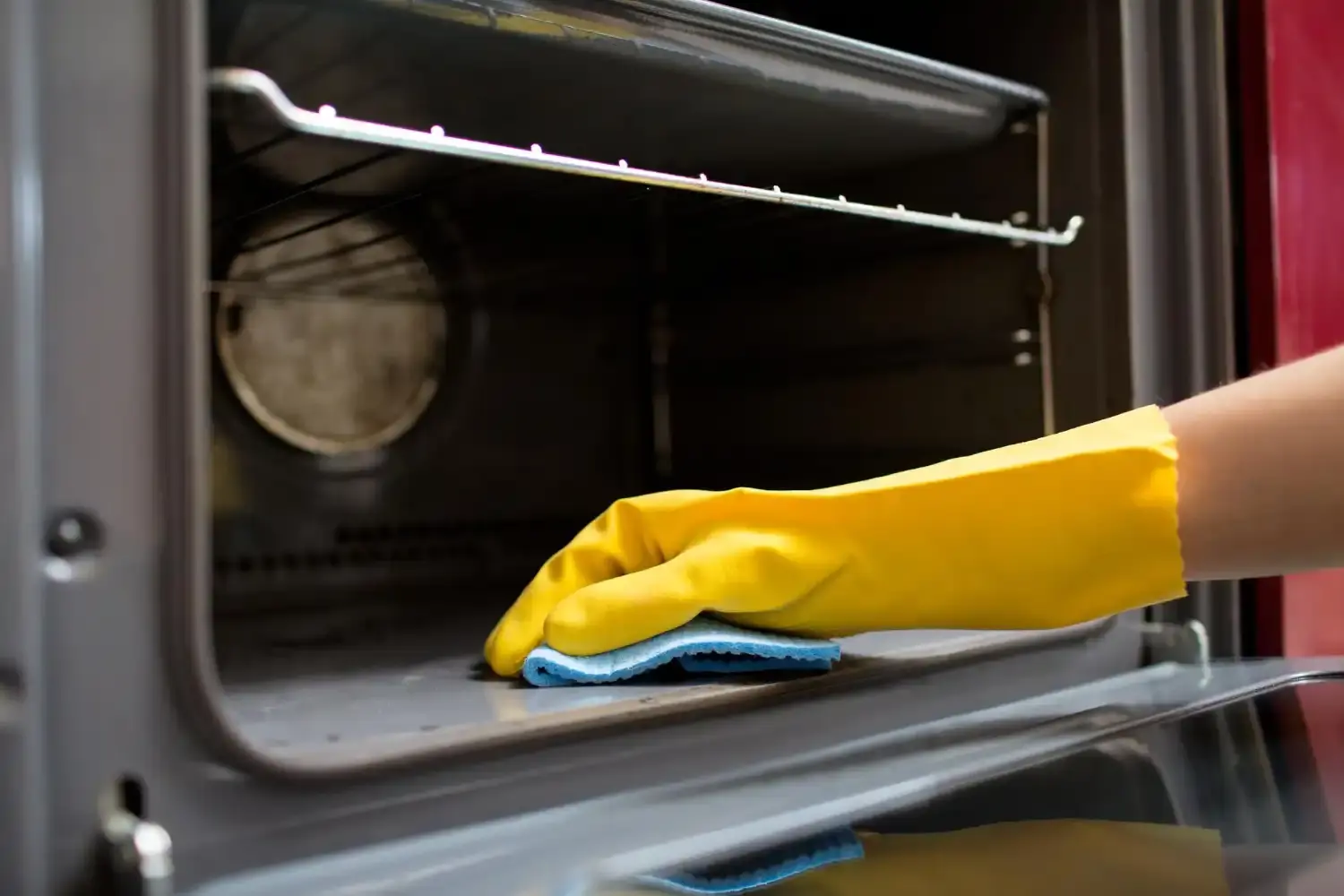How to Clean a Fabric Couch | Ultimate Guide
Keep your fabric sofa spotless! This guide covers everything from identifying your fabric type to removing tough stains. Learn expert tips & tricks for easy couch cleaning.

We've all been there. You open the oven to preheat for a delicious meal, only to be met by a scene straight out of a horror movie. Burnt-on food splatters, stubborn grease streaks, and that lingering odor that makes your stomach churn. Fear not, fellow home chefs! There's a powerful weapon in your arsenal that can tackle even the most daunting oven messes: the humble combination of baking soda and vinegar.
This natural cleaningduo is a champion for several reasons. First and foremost, it's eco-friendly and non-toxic. No harsh chemicals, no stinging fumes – just safe and effective cleaning power. This makes it a perfect choice for those with sensitivities or families with young children and pets. Plus, baking soda and vinegar are readily available and budget-friendly ingredients, making this a DIY oven cleanerthat won't break the bank.
But how exactly does this dynamic duo work its magic? Let's delve into the science behind cleanliness. Baking soda, a natural scouring agent with a mildly abrasive texture, helps loosen and lift grime. Vinegar, on the other hand, is a weak acid that cuts through grease and breaks down baked-on food particles. When combined, they create a fizzy reaction that further enhances their cleaning power.
Now that you're armed with the knowledge, let's get down to business and explore the steps on how to clean your oven with baking soda and vinegar.
Table of contents [Show]
Before you embark on your oven cleaning crusade, ensure safety:
Here's what you'll need to create your natural oven-cleaning solution:
The first step involves creating a baking soda paste, the heart of your natural oven cleaning solution. In a bowl, combine:
The consistency should be similar to pancake batter. If it's too dry, add a little more water by the tablespoon until you reach the desired texture

Now comes the fun part! Using a spoon or your gloved hand, generously spread the baking soda paste all over the interior surfaces of your oven, including the sides, bottom, and back. (Avoid the heating elements, electrical components, and the rubber door seal). You can also remove the oven racks and coat them with paste for a more thorough clean.
Once your oven is coated in baking soda paste, it's time for the magic to happen. Close the oven door and let the paste sit for its cleaning spell. Here's the key:
After the allotted waiting time, prepare for some fizzy action! Grab your spray bottle and fill it with white vinegar (undiluted). Now comes the moment of truth:
Carefully open the oven door and spray the vinegar solution directly onto the baking soda paste. This will trigger a fizzing reaction, which is completely normal and indicates the cleaning power is activated.
Be cautious while spraying, as the vinegar can react with the baking soda to create bubbles that may splatter.
Let the vinegar and baking soda party for 10-15 minutes. This allows the solution to further loosen and break down grime.

Now that the grime has loosened its grip, it's time to take on the remaining dirt. Here's where your scrubbing muscles come in:
Once you've scrubbed all the surfaces, it's time to rinse and wipe clean the oven:

If you removed the oven racks for cleaning, here's how to tackle them:
After a thorough cleaning, your oven might still have some lingering odors. Here's how to banish them for good:
By choosing the natural way ofcleaning the ovenusing baking soda and vinegar, you're not just tackling oven grime, you're also making a sustainable choice. This eco-friendly method avoids harsh chemicals and fumes, making it safe for your family and the environment. Plus, it saves you money on expensive commercial oven cleaners.
Keep your fabric sofa spotless! This guide covers everything from identifying your fabric type to removing tough stains. Learn expert tips & tricks for easy couch cleaning.
Learn how to revitalize your wood furniture using vinegar, a safe and effective natural cleaner. Our guide provides detailed instructions and tips for restoring your wooden pieces to their original beauty.
Learn how to remove stubborn toilet bowl rings with effective DIY methods and commercial cleaners. Plus, discover prevention tips to keep your toilet sparkling clean.
Find out the ideal cleaning frequency for your bathroom! Explore daily, weekly, and monthly tasks to ensure a hygienic and sparkling space.